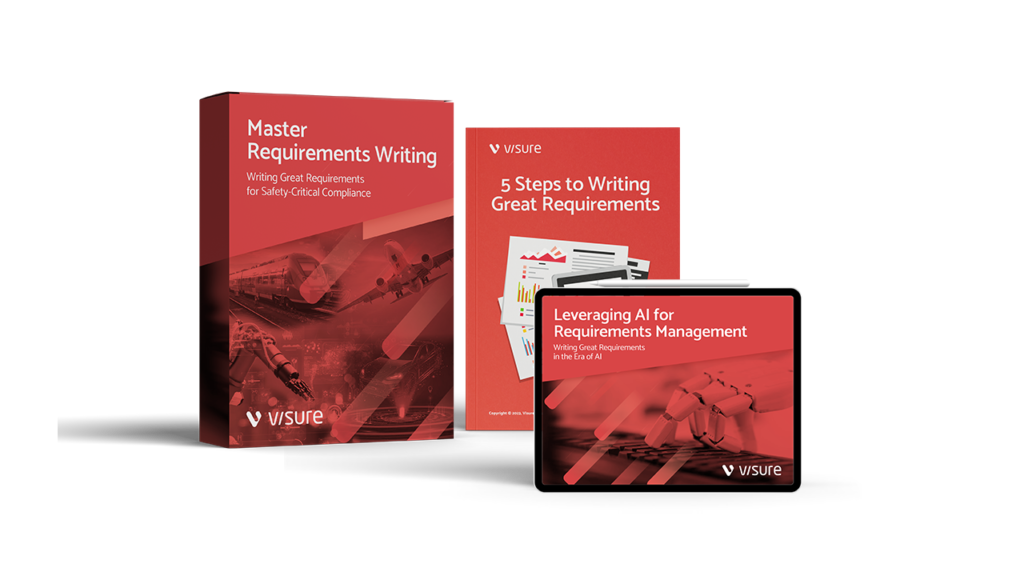The Most Complete Guide to Requirements Management and Traceability
The 4 Fundamentals of Requirements Management
Table of Contents
Introduction
Requirements management is a critical aspect of any successful project, whether it’s software development, product design, or any other endeavor that involves defining and fulfilling specific goals. Effective requirements management ensures that project stakeholders are on the same page, reduces misunderstandings, and helps deliver products that meet customer expectations. In this article, we will delve into the four key fundamentals of requirements management that are essential for achieving project success.
Understanding Requirements Management
Requirements management involves the process of capturing, documenting, analyzing, and validating the needs and expectations of stakeholders. It forms the foundation for project planning, execution, and successful delivery. The main goal of requirements management is to ensure that the final product aligns with the stakeholders’ needs and expectations.
The Four Fundamentals
Requirements management is a vital process that serves as the backbone of successful project execution across various domains, including software development, product design, and engineering. It involves the systematic handling of project requirements to ensure that all stakeholders have a common understanding of what needs to be achieved. By adhering to the four key fundamentals of requirements management, projects can avoid ambiguity, streamline communication, and deliver results that align with stakeholder expectations.
Elicitation and Gathering
The first fundamental of requirements management is the process of eliciting and gathering requirements. Elicitation refers to the active exploration and extraction of information from stakeholders, including end-users, clients, domain experts, and project sponsors. This stage aims to comprehend their needs, objectives, and expectations concerning the project. Various techniques such as interviews, surveys, focus groups, and workshops are employed to extract valuable insights.
Gathering requirements involves the systematic collection of information obtained during the elicitation process. This phase emphasizes recording all relevant details accurately and comprehensively. The information gathered serves as the foundation for further project activities, ensuring that the project’s scope is well-defined and aligns with stakeholder desires.
Documentation and Communication
Once requirements are elicited and gathered, it’s crucial to document and communicate them effectively. Documentation transforms the collected information into a structured format that is easily understandable by all stakeholders. Clear and concise documentation reduces the likelihood of misinterpretations and ensures a consistent understanding of the project’s objectives.
Various types of documents are used to capture requirements, depending on the nature of the project and the preferences of the stakeholders. These may include requirement specifications, user stories, use cases, functional and non-functional requirements, and graphical representations like flowcharts and diagrams. Effective communication of documented requirements facilitates collaboration, minimizes confusion, and serves as a reference point throughout the project lifecycle.
Analysis and Prioritization
After documentation, the gathered requirements undergo analysis and prioritization. Analysis involves a thorough examination of each requirement to assess its feasibility, clarity, and relevance. This step ensures that requirements are free from contradictions, ambiguities, and unrealistic expectations. The analysis process often involves domain experts, business analysts, and technical teams who collectively refine the requirements.
Prioritization involves categorizing requirements based on their importance and impact on the project’s success. Not all requirements are of equal significance; some are critical while others are desirable but not essential. Assigning priorities helps allocate resources effectively, manage risks, and make informed decisions about scope changes. Prioritization ensures that the most crucial aspects of the project are addressed first, reducing the risk of delays and cost overruns.
Validation and Verification
The final fundamentals of requirements management are validation and verification. Validation ensures that the documented requirements accurately represent the stakeholders’ needs and expectations. This involves confirming that the requirements align with the project’s goals and are comprehensive enough to guide the development process. Validation prevents the project from deviating from its intended course before significant resources are invested.
Verification, on the other hand, focuses on confirming that the developed product adheres to the specified requirements. Regular checks and testing are conducted to verify that the project is progressing as planned and that the end product will meet stakeholder expectations. Verification is a critical step to ensure that the project delivers the intended value and fulfills its promises.
Best Practices for Requirements Management
- Engage Stakeholders: Involving stakeholders from the beginning ensures that their needs are understood and considered throughout the project.
- Maintain Traceability: Establish and maintain traceability between requirements, design, development, and testing to ensure consistency and transparency.
- Use Clear Language: Write requirements in clear and unambiguous language to avoid misinterpretations.
- Review and Iterate: Regularly review and refine requirements to accommodate changes and evolving needs.
- Involve Quality Assurance: Quality assurance teams can provide valuable insights to validate that requirements are complete, accurate, and feasible.
Tools for Efficient Requirements Management
Several tools are available to facilitate efficient requirements management, including:
- Requirement Management Software: Requirements Management Tools like Visure Solutions help in capturing, organizing, and tracking requirements.
- Collaboration Platforms: Platforms such as Confluence and SharePoint enable teams to collaborate on requirements documentation.
- Diagramming Tools: Tools like Lucidchart and draw.io aid in creating visual representations of requirements, such as flowcharts and diagrams.
Conclusion
Effective requirements management is pivotal for project success. By understanding and implementing the four fundamental aspects of requirements management—elicitation and gathering, documentation and communication, analysis and prioritization, and validation and verification—projects can be well-guided from inception to completion. Following best practices and utilizing appropriate tools further enhances the efficiency and accuracy of requirements management, contributing to the overall success of the project.
Don’t forget to share this post!
Start Gaining End-to-End Traceability Across Your Projects with Visure Today
Start 30-day Free Trial Today!



